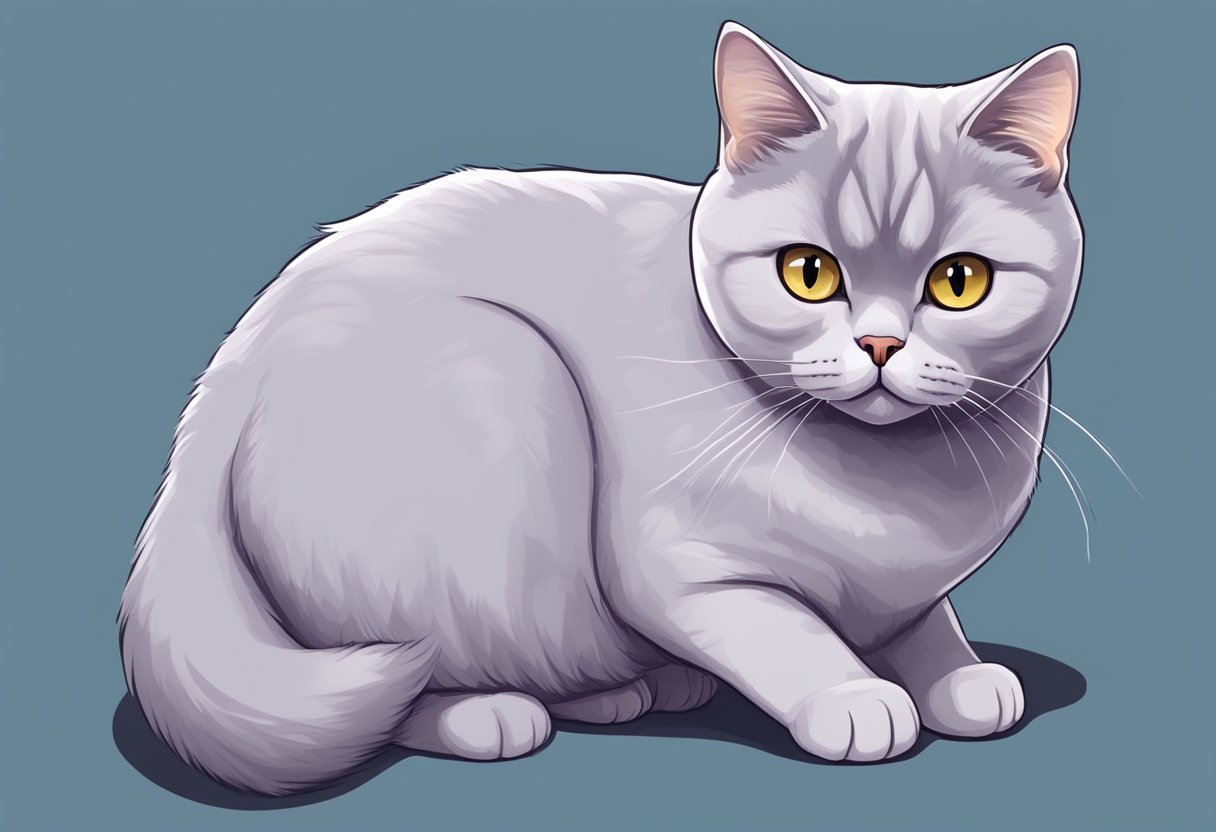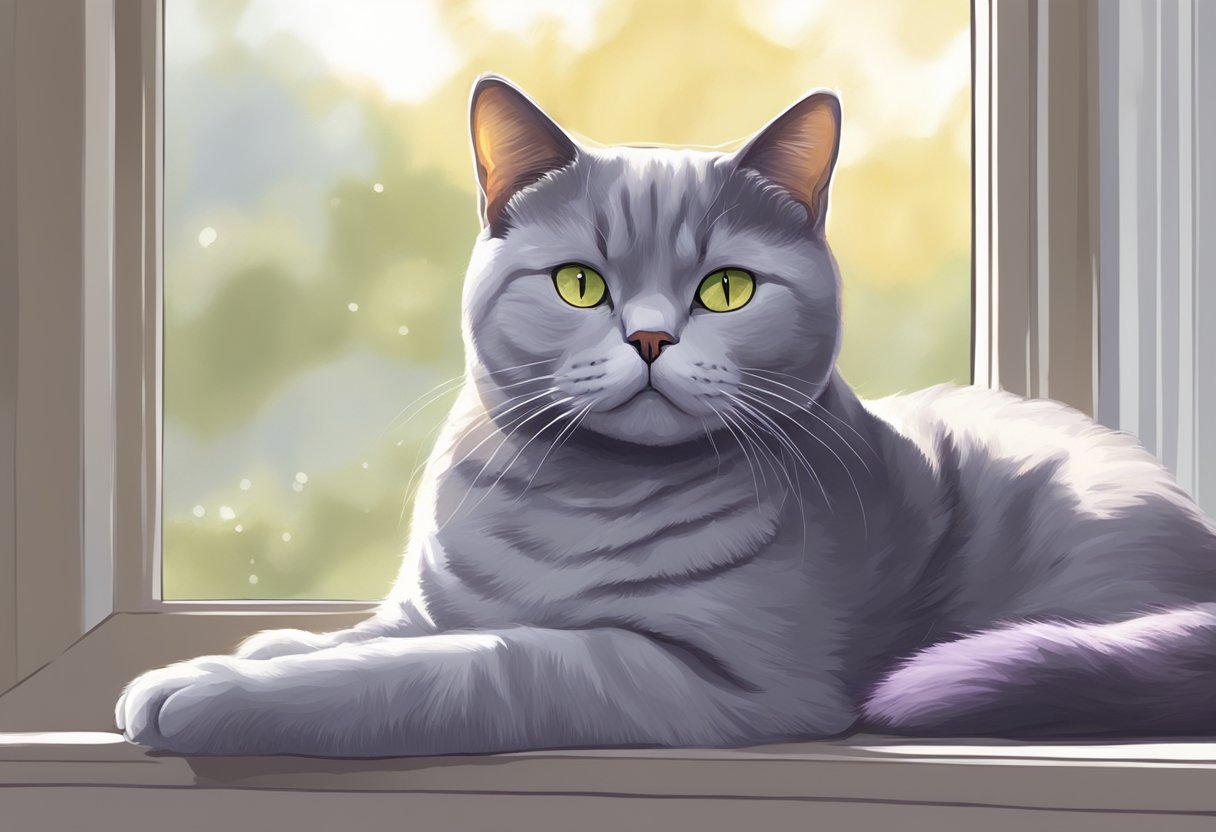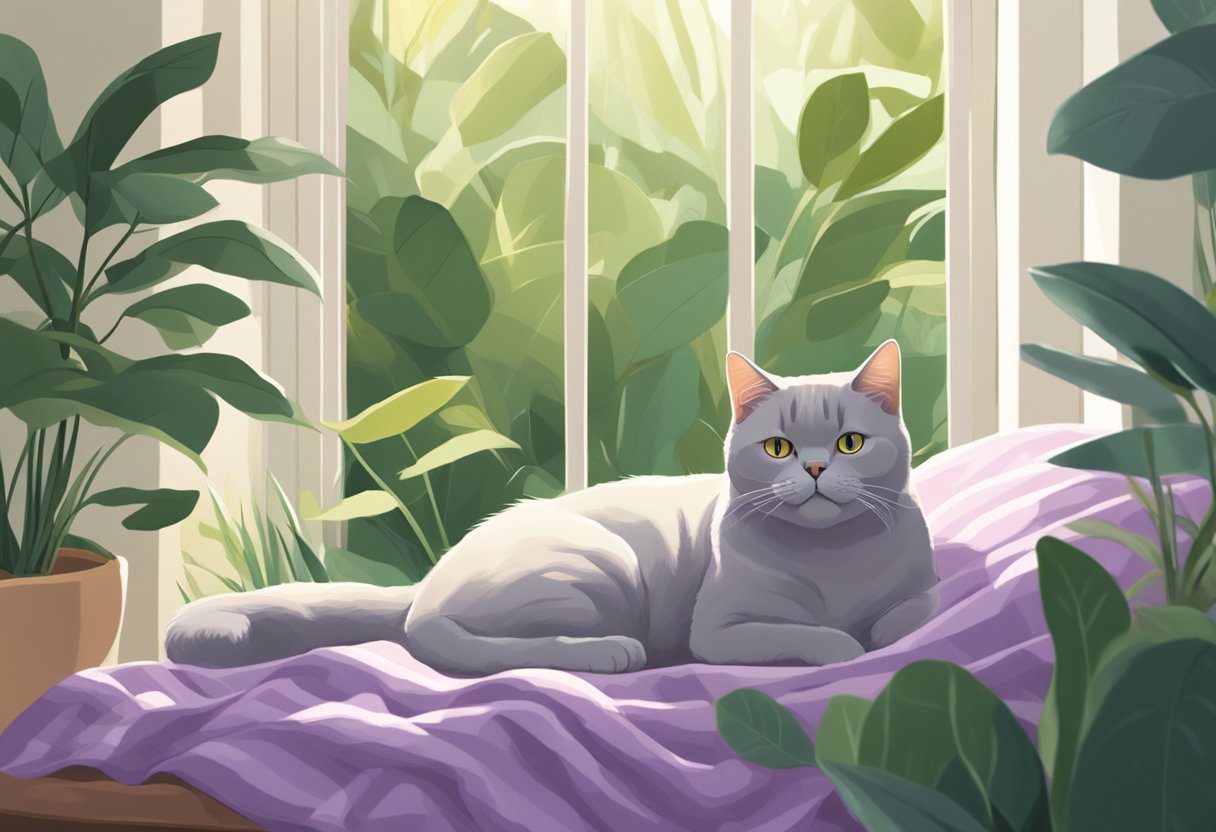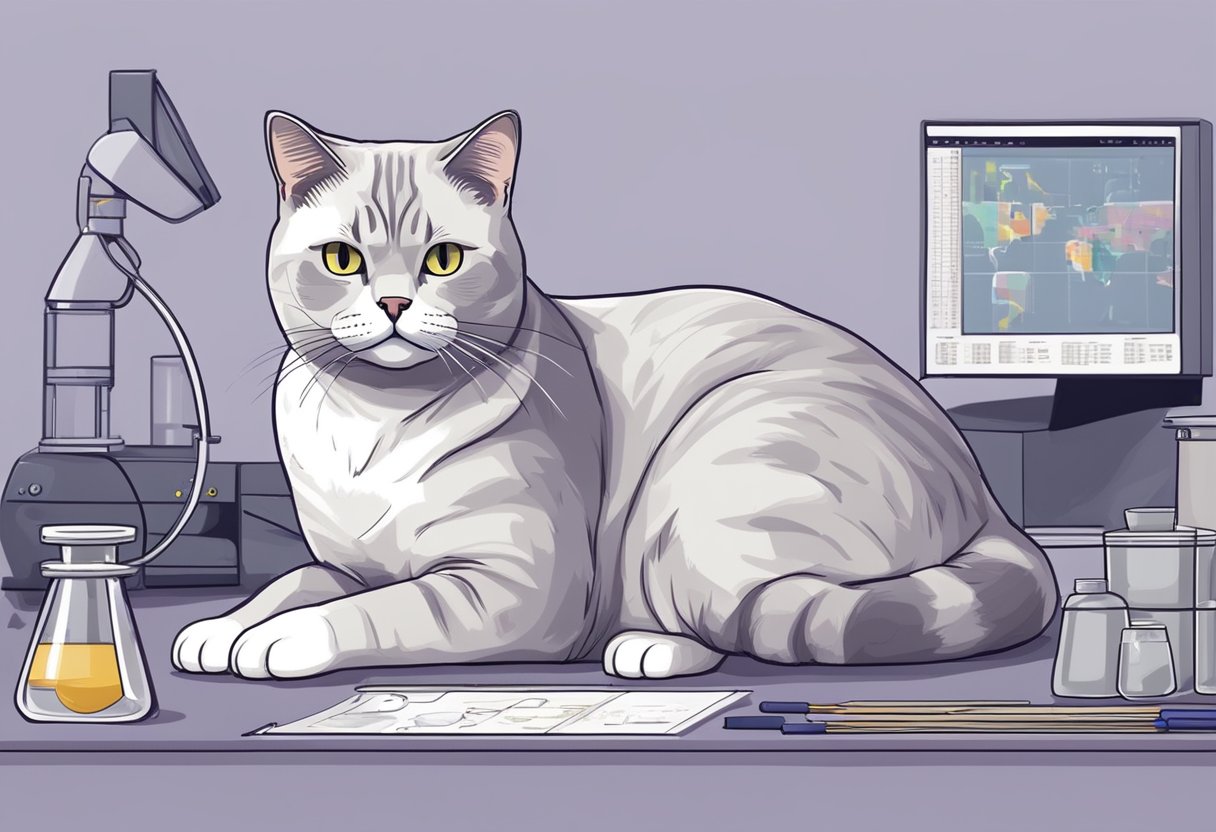A Guide to the Charming and Plush Breed • Kritter Kommunity
Oh, let me gush about Lander, the lilac British Shorthair cat! Picture a fur coat with soft hints of bluish, pinkish, and grayish tones—it’s like a walking masterpiece. This breed’s dense, plush fur and round features make it a cuddle magnet, and that lilac shade?
Rarity at its finest!
I delved into cat genetics to learn that both parents need the right combo for that exquisite color. Cats? They rule the house and steal hearts.
Lander’s become my latest fascination—a blend of color, charm, and irresistible allure!
In this blog post you’ll learn:
- Unique Appearance: They have a plush fur coat blending bluish, pinkish, and grayish hues, making them sought-after due to their rare lilac coloration.
- Temperament: Known for their calm, affectionate nature and adaptability to various households.
- Physical Traits: Robust, muscular bodies, and distinctive round faces with large, captivating eyes.
- Care Requirements: Regular grooming for their dense coat, balanced diets, and daily play for their well-being.
- Health Considerations: Predisposed to certain conditions like heart and kidney issues, requiring regular vet check-ups for a long, healthy life.
- Breeding and Adoption: Emphasis on genetic diversity in breeding and the option of adoption, ranging from $50 to $150 for adoption fees.
- Ownership Responsibilities: Owners should ensure a safe environment, proper nutrition, exercise, and adherence to local regulations.
- FAQs: Answers to common questions regarding coat color differences, pricing, unique traits, and care considerations for Lilac British Shorthairs.
As you learn more about the lilac British Shorthair, you’ll find that there’s much to appreciate beyond their charming looks. These cats are known for their calm demeanor, making them excellent companions. They tend to be easygoing and can adapt well to different types of homes and lifestyles. Whether you live alone or with a bustling family, a lilac British Shorthair could be a delightful and affectionate addition to your life.
Absolutely! Here’s a focused version specifically tailored to the Lilac British Shorthair Cat:
Decoding the Lilac British Shorthair Cat Colors
The Lilac British Shorthair stands out amidst classic blue-coated cats. Their unique hue is a result of dedicated breeding efforts, making these rare colors a treasure for enthusiasts. Sorting these shades helps keep their rainbow organized, categorized by main color, pattern, and shading.
Understanding what makes a Lilac British Shorthair’s color is like unraveling an art project. Genetics, parental traits, and the dominance of color genes all contribute. Breeders choose mates carefully, looking for perfect color compatibility.
So, what makes up the Lilac British Shorthair’s color palette? Here’s the breakdown:
| Characteristics | Definition |
|---|---|
| Color of the Coat | The primary shade covering the cat’s fur. |
| Color of the Undercoat | The hidden hue beneath the visible fur. |
| Pattern of the Fur | Any distinct markings or designs on the fur. |
| Eye Color | The captivating color of the cat’s eyes. |
| Color of Paw Pads | The tint adorning the cat’s paw pads. |
| Color of the Tip of the Nose | The hue defining the cat’s nose tip. |
These defining traits reveal the enchanting and diverse spectrum that defines the Lilac British Shorthair’s charm.
This table breaks down and explains the characteristics that make up the unique coloration of the Lilac British Shorthair Cat, offering a clearer insight into their captivating and distinctive appearance.
Breed Overview
As you explore the charming Lilac British Shorthair, you’ll discover a cat breed with a distinctive color, plush coat, and a rich history. Let’s delve into the roots, appearance, and standing of this beloved breed.
History
The British Shorthair, with its unique lilac hue, stems from the traditional British domestic cat but has been selectively bred to enhance its characteristics. This breed has ties dating back to ancient Rome, reflecting a legacy that’s as rich in history as it is in color.
Characteristics
Featuring a robust body, the Lilac British Shorthair has a compact, muscular frame. Your cat’s coat is a soft grey with hints of both blue and pink, a result of a genetic color dilution. Males typically weigh between 7 to 17 pounds, while their length can reach up to 25 inches, with females being slightly smaller.
Popularity
The appeal of the Lilac British Shorthair extends beyond its plush coat to its gentle, affectionate personality. Their easygoing temperament has endeared them to cat lovers, making them a popular choice for companionship worldwide.
Physical Traits



Physical Features of Lilac British Shorthair Cats
| Aspect | Description |
|---|---|
| Coat Color | Soft blend of bluish, pinkish, and grayish hues; diluted version of chocolate |
| Coat Texture | Dense, plush, short fur requiring regular grooming |
| Body Structure | Robust, muscular; males 7-17 pounds, up to 25 inches long; females slightly smaller |
| Facial Features | Round, amicable face; full cheeks, well-developed muzzle; large, round eyes, small to medium ears |
Distinct Traits
Your Lilac British Shorthair boasts unique characteristics that set it apart in both appearance and charm. These cats are cherished for their plush coat, robust body structure, and endearing facial features.
Coat and Color
Your Lilac British Shorthair’s coat is renowned for its unique coloration – a blend of soft dove-grey with a pinkish hue. This tone is actually a diluted version of chocolate, which results from both parents carrying a specific dilution gene. This gives them a pale, pleasing appearance that is admired by cat lovers worldwide.
Body Structure
Size and Weight:
- Males: Typically larger, often exceeding 12 pounds.
- Females: Slightly smaller, with weights that can also reach and surpass 12 pounds.
Your cat’s body is built to be large and muscular, with a broad chest and robust legs that add to its sturdy and rounded appearance, characteristic of the breed.
Facial Features
Your Lilac British Shorthair’s face is round and amicable, with full cheeks and a well-developed muzzle. Their large, round eyes are a notable feature that can capture your attention and often exude a sense of calm intelligence. Their ears are small to medium in size, rounded at the tips and set far apart, harmonizing with their round head and chubby cheeks.
RELATED: Exploring the Charms of Flat Face Persian Cats
Temperament and Personality



The Lilac British Shorthair is often celebrated for its serene nature and pleasant disposition that make it an ideal companion for cat lovers.
Behavior
You’ll find that your Lilac British Shorthair typically exhibits a calm and collected demeanor. This cat breed is known for its laid-back personality, not easily phased by the hustle and bustle of a busy household. They enjoy affection and may seek out your lap or a comfy spot next to you to settle down.
Compatibility with Families
When it comes to integrating into family life, your Lilac British Shorthair will likely be a seamless fit. This breed’s placid nature allows it to tolerate day-to-day household activities and noise. Given their affectionate nature, they can be perfect pets for first-time cat owners or families with children looking for a loving and less demanding pet.
Interaction with Other Pets
If you’ve got other pets, you’ll be pleased to know that the Lilac British Shorthair generally gets along well with them. Due to their easy-going temperament, they can coexist peacefully with other animals, provided they are properly introduced and the environment is harmonious.
Care and Maintenance
When caring for your Lilac British Shorthair, attention to grooming, diet, and exercise is essential to keep your feline companion happy and healthy.
Grooming Requirements
Your Lilac British Shorthair’s coat is short, dense, and plush, requiring regular brushing to keep it looking its best. Aim for at least once weekly brushing to remove loose fur and help prevent hairballs. During shedding season, you may need to increase this to a couple of times per week to manage the extra fur.
Diet and Nutrition
A balanced diet is crucial for your cat’s overall health. Ensure your cat eats high-quality cat food rich in protein and with moderate fat levels. Pay attention to her food’s nutritional content, and consider incorporating a mix appropriate for her age, as kittens and adult cats have different dietary requirements.
Exercise Needs
Though British Shorthairs are not as active as other breeds, they still need regular playtime and stimulation to stay in shape. Provide scratch posts, toys, and interactive play sessions to keep your cat engaged. Aim for at least 15 minutes of play each day to support a healthy weight and to promote mental well-being.
Health and Lifespan



When it comes to your Lilac British Shorthair’s well-being, it’s important to be aware of their possible health issues and how to prevent them, as well as understanding their lifespan.
Common Health Issues
Your Lilac British Shorthair might be predisposed to certain health conditions. Although genetically robust, they can still face issues such as:
- Heart conditions like hypertrophic cardiomyopathy
- Kidney problems, specifically polycystic kidney disease
Knowing these conditions can help you catch any signs early.
Preventive Measures
To keep your feline friend healthy:
- Ensure regular veterinary check-ups
- Maintain a well-balanced diet
- Provide regular exercise to prevent obesity, which is a common concern in the breed
These steps can make a significant difference in your cat’s health.
Lifespan Expectancy
With proper care, your Lilac British Shorthair has a long lifespan, averaging between 12 to 20 years. Good genetics and a caring environment contribute to your cat reaching their full life potential.
Breeding and Genetics



Diving into the world of Lilac British Shorthairs, you’ll discover fascinating details about their breeding standards, the importance of genetic diversity, and the inherited traits that make them unique.
When breeding Lilac British Shorthairs, it is crucial to adhere to the British Shorthair Breeding Policy. They should exhibit a plum-grey coat, described as a pale, grayish-purple that comes from a specific genetic combination. Understanding the hierarchy of pigment genetics is essential; for instance, the colour blue in cats is dominant to shades like lilac and fawn.
Genetic Diversity
Maintaining genetic diversity in the Lilac British Shorthair population is important for the wellbeing of the breed. Diverse genetics help prevent health issues tied to inbreeding and ensure a robust gene pool. This diversity contributes to variations within the breed, with each cat displaying unique nuances in their lilac coat.
Inherited Traits
Your Lilac British Shorthair’s coat color is an inherited trait, governed by a combination of genes. A true lilac coloration results from the presence of two dilution genes which lighten the base color. For example, a cat with two ‘dd’ genes will express the lilac shade instead of chocolate. It’s a delicate balance of genetics that results in their distinctive bluish-pinkish-grey hue.
Adoption and Purchasing
When considering adding a Lilac British Shorthair cat to your family, you will be looking at either reputable breeders or adoption avenues, while also keeping in mind the various costs involved.
You might come across breeders who specialize in British Shorthairs through platforms like Cats & Kittens for Adoption.
Adoption Options
Adoption can be a heartwarming and responsible choice. Organizations such as Adopt a Pet help you find British Shorthair cats in need of homes, which could include the Lilac variety. By adopting, you give a cat a second chance at a loving home while potentially saving on initial costs.
Cost Considerations
The cost of a Lilac British Shorthair cat can vary widely depending on whether you adopt or purchase from a breeder. Adoption fees typically range from $50 to $150, while purchasing from a breeder can cost anywhere from $500 to over $1,500. Keep in mind that additional costs for vaccinations, spaying/neutering, and regular health check-ups are also to be expected.
Legal and Ethical Ownership
Responsible ownership of a Lilac British Shorthair cat involves understanding and adhering to various legal and ethical considerations. Ensuring you are educated in these areas will help maintain the well-being of the cat and the integrity of the breed.
Ownership Responsibilities
As an owner, it’s essential to provide your Lilac British Shorthair with a loving and safe environment. Your responsibilities include:
- Regular veterinarian check-ups to maintain health.
- Adequate nutrition and exercise appropriate for the breed.
- Ensuring ID tags and microchips are up to date for safety.
Regulatory Considerations
Different regions have specific regulations governing pet ownership and breeding. Make sure you:
- Check with the Governing Council of the Cat Fancy or local authorities on any breeding and ownership laws.
- Are familiar with and follow any licensing or registration requirements.
- Understand import or export restrictions if you plan to bring a cat from another country.
Frequently Asked Questions
In this section, you’ll find some of the most prominent questions and information specifically about Lilac British Shorthair cats to guide you in understanding their unique aspects.
How can one distinguish between Lilac and Blue coat colors in British Shorthair cats?
Lilac British Shorthairs possess a unique bluish-pinkish-grey color, which is lighter and warmer than the Blue British Shorthair’s coat. The Lilac coat is a result of specific genetic combinations and distinct from the blue variant’s cooler, steel-grey shade.
What are the general price ranges for British Shorthair kittens?
The price for British Shorthair kittens ranges widely, often influenced by pedigree, location, and coat color rarity. Generally, you can expect to pay from several hundred to a few thousand dollars.
To learn more, consider professional associations for British Shorthair cats.
What are the unique traits of a Lilac British Shorthair cat compared to other British Shorthair variants?
The Lilac British Shorthair stands out with its distinct coat color. Moreover, they share the breed’s sweet rounded face and robust, muscular body but present the soft lilac hue not found in other variants.
How does the rarity of the Lilac coat color affect the availability of these cats?
Due to the specific genetic requirements to produce the lilac coloration, Lilac British Shorthairs are less common. This rarity can make the cats more sought after and sometimes more challenging to find.
What care considerations are specific to British Shorthairs with a Lilac coat?
British Shorthairs, including those with a Lilac coat, have a dense, plush coat that requires regular grooming. They are prone to obesity, so maintaining a proper diet and adequate exercise is essential to keeping them healthy.
